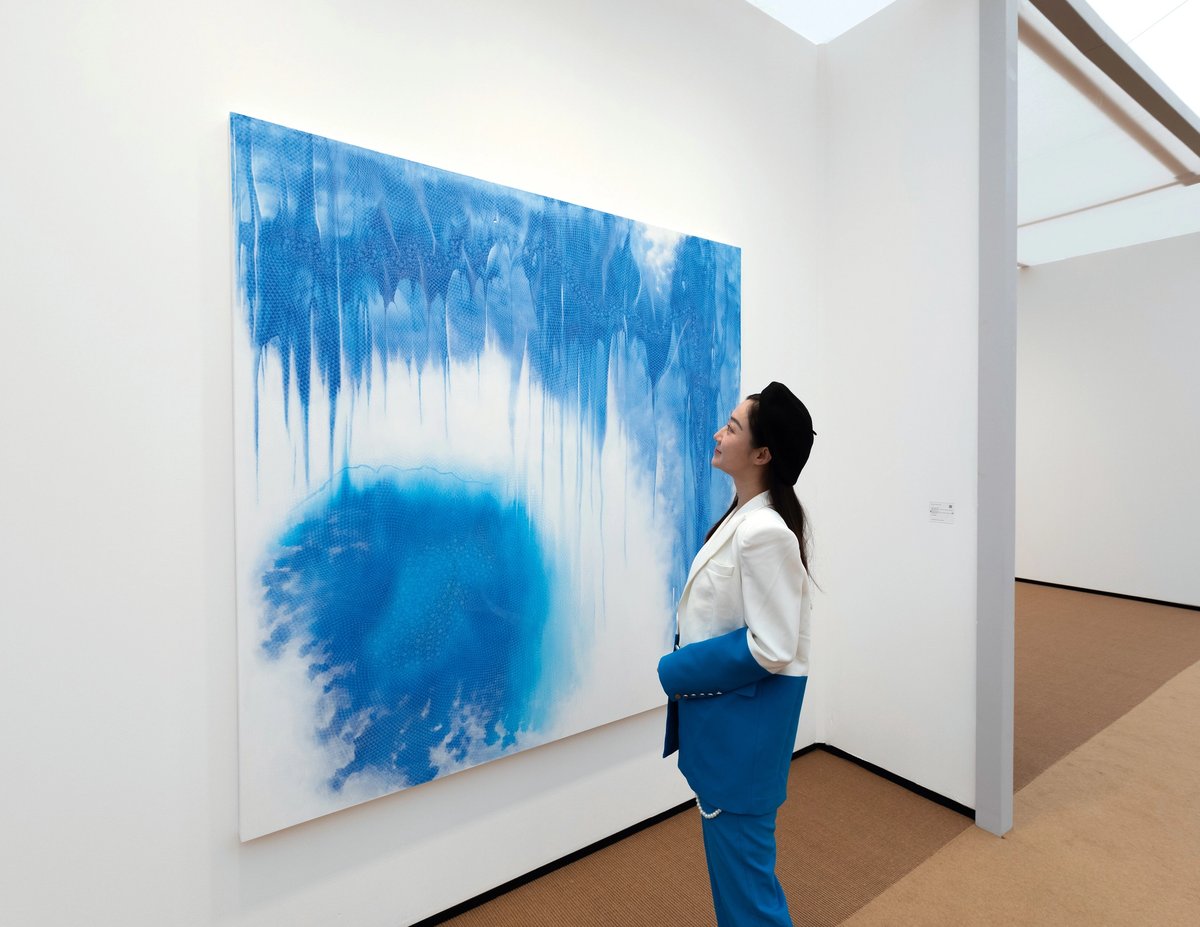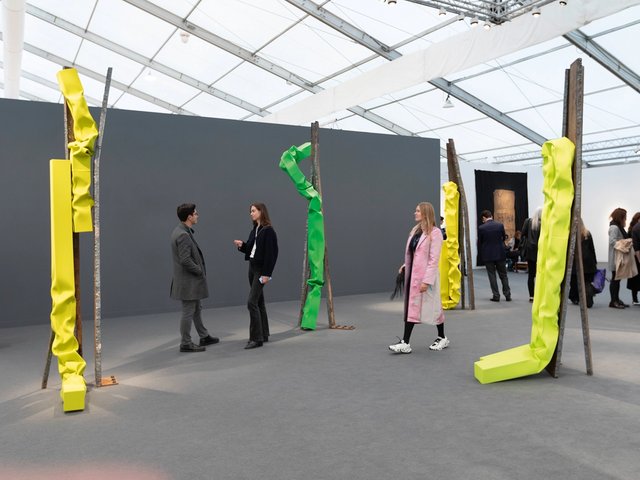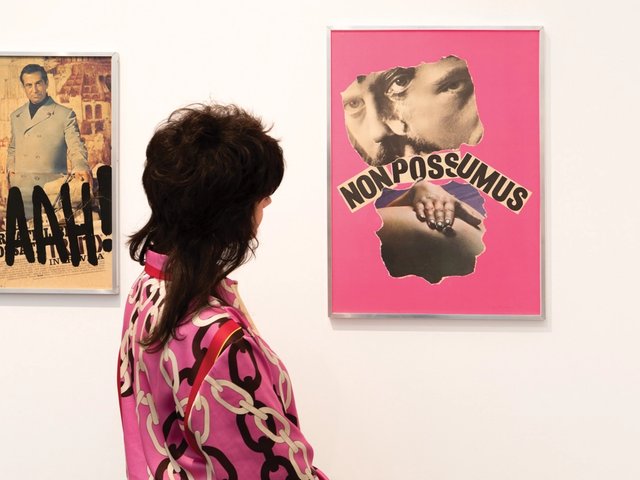The curator Sheena Wagstaff has curated a second edition of the Studio section at Frieze Masters as part of her new role as the fair’s creative adviser. This year is an expanded edition, with stands dedicated to ten mid-career and senior artists, all of whom engage with historical art and have begun to reinvent their practice. The focus is on artists’ working spaces, with each immersive presentation, Wagstaff says, seeking to “evoke the spirit” of the studio. The ultimate aim, she adds, is to show that the best way “to animate history is via living artists”.
Shirazeh Houshiary
Rite of Passage (2024), above
Lisson Gallery
Shirazeh Houshiary combines quantum physics, spirituality and the hard-graft practice of painting. She works on her hands and knees on the canvas and makes these drawings—when you get up close to the surface you see this extraordinary lattice. It’s about the interweaving of line, about chance. It’s spiritually based, but it’s not woo-woo, because it actually connects art with science in a very clear way, which has to do with cosmic interchange and where we sit in relation to the cosmos.
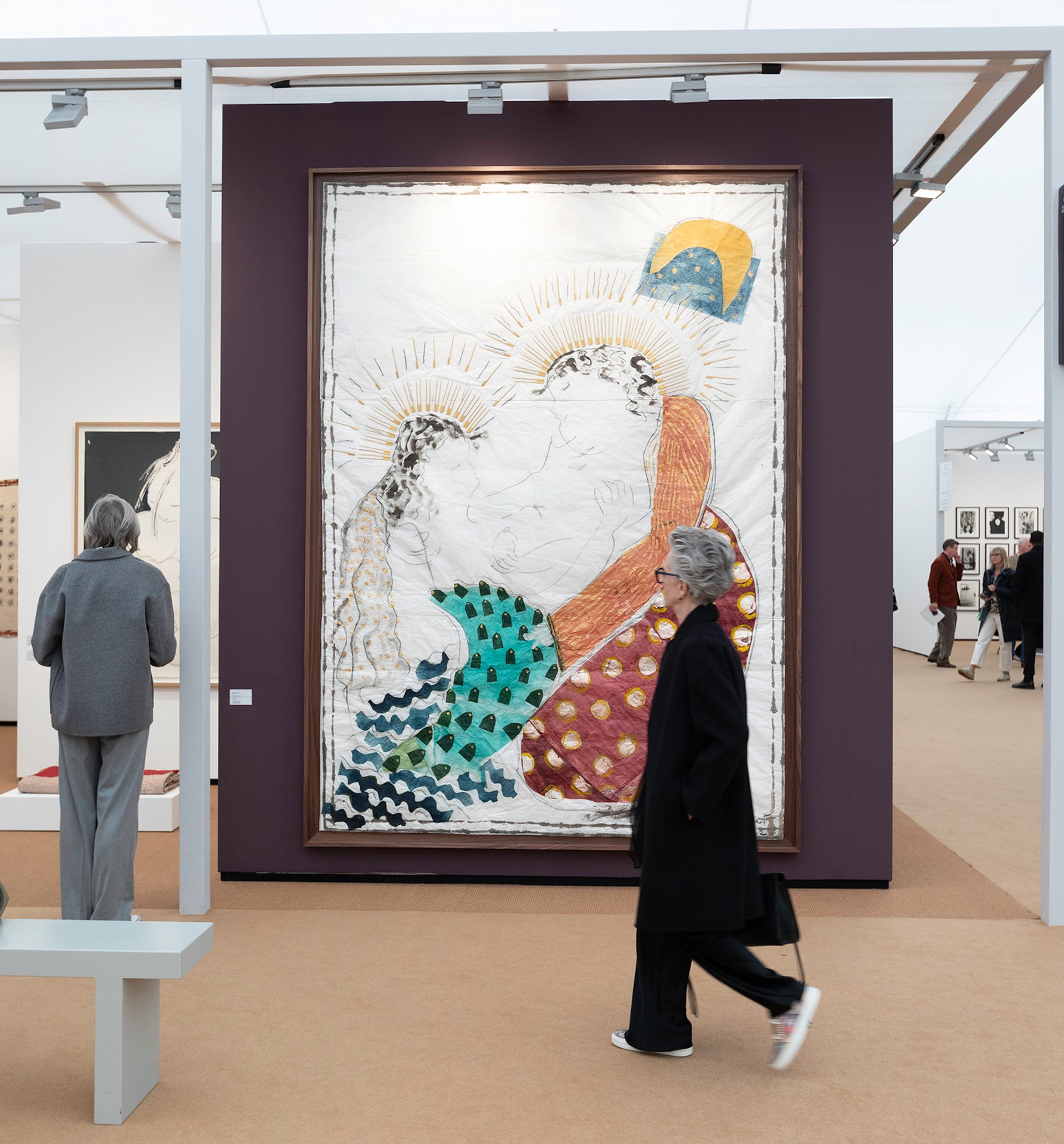
Isabella Ducrot, Almost Divine (2022) David Owens
Isabella Ducrot
Almost Divine I (2022)
Sadie Coles HQ, Galerie Gisela Capitain and Standard
Isabella Ducrot’s practice is either on handmade paper or fabric woven to her specification. It also includes collage and these wafer-thin pieces of tissue paper, which she sews onto the surface. What you’re seeing here is highlighted because it’s painted on the surface with this thick gilt paint. Another part of her practice is devoted to this kind of eroticism, which comes out of Indian art, but also Iranian, Persian miniatures. This work is a very sincere celebration of bodily engagement, particularly because the whole nature of the material is one that sits on our skin.

Thaddeus Mosley, Untitled (1966) David Owens
Thaddeus Mosley
Untitled (1966)
Karma
Thaddeus Mosley was born and has lived pretty much all his life in Pittsburgh, Pennsylvania. He’s 98. He grew up in an environment where jazz had an unbelievably strong reputation, and Thad employs a great deal of the same sort of approach through improvisatory sculpting. At the same time he was influenced by more obvious people like Isamu Noguchi and Constantin Brâncuși; less obvious is the influence of Dogon sculpture and Yoruba sculpture. He uses only fallen wood, and he just works with what the wood presents him with. This is a wonderful early work and you can see the way he works is quite different to Kim Yun Shin: he cuts in and then finds the form inside.
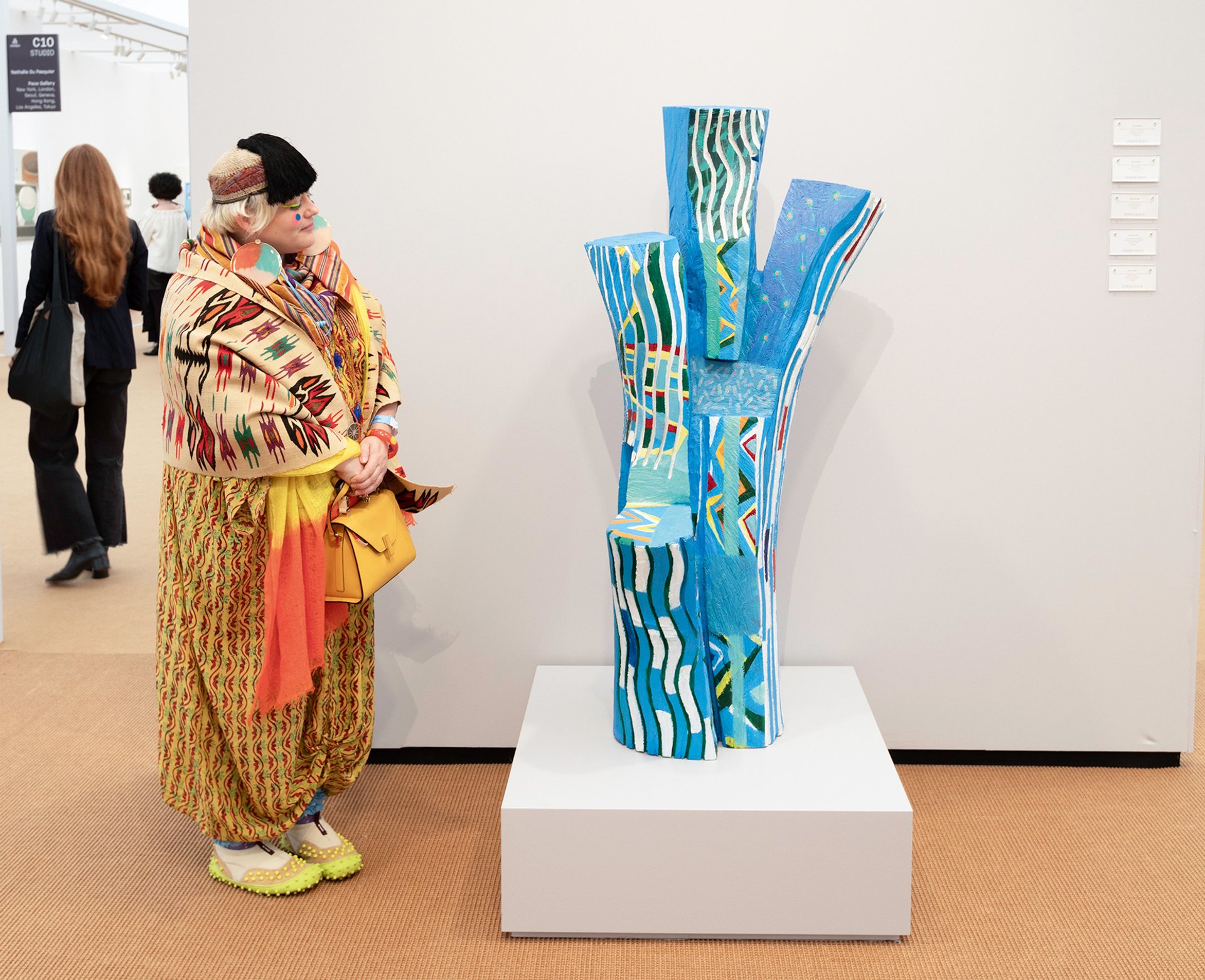
Kim Yun Shin, Add Two Add One, Divide Two Divide One (2022) David Owens
Kim Yun Shin
Add Two Add One, Divide Two Divide One (2022)
Lehmann Maupin
Kim Yun Shin was born in Korea, which then became North Korea, so at the age of 12, she and her family fled to the south. She then later moved to Argentina, returning to Korea two years ago. There aren’t many people who combine those kinds of countries in their background, and what you can see in her work is a reflection of that to some extent. She makes her works with a chainsaw, and then finesses them. She paints as well, and her book list, which we got from each artist, includes Stephen Hawking’s A Brief History of Time and the last journal of [the philosopher Jiddu] Krishnamurti. So she really does cross over very different types of frontiers in her work.
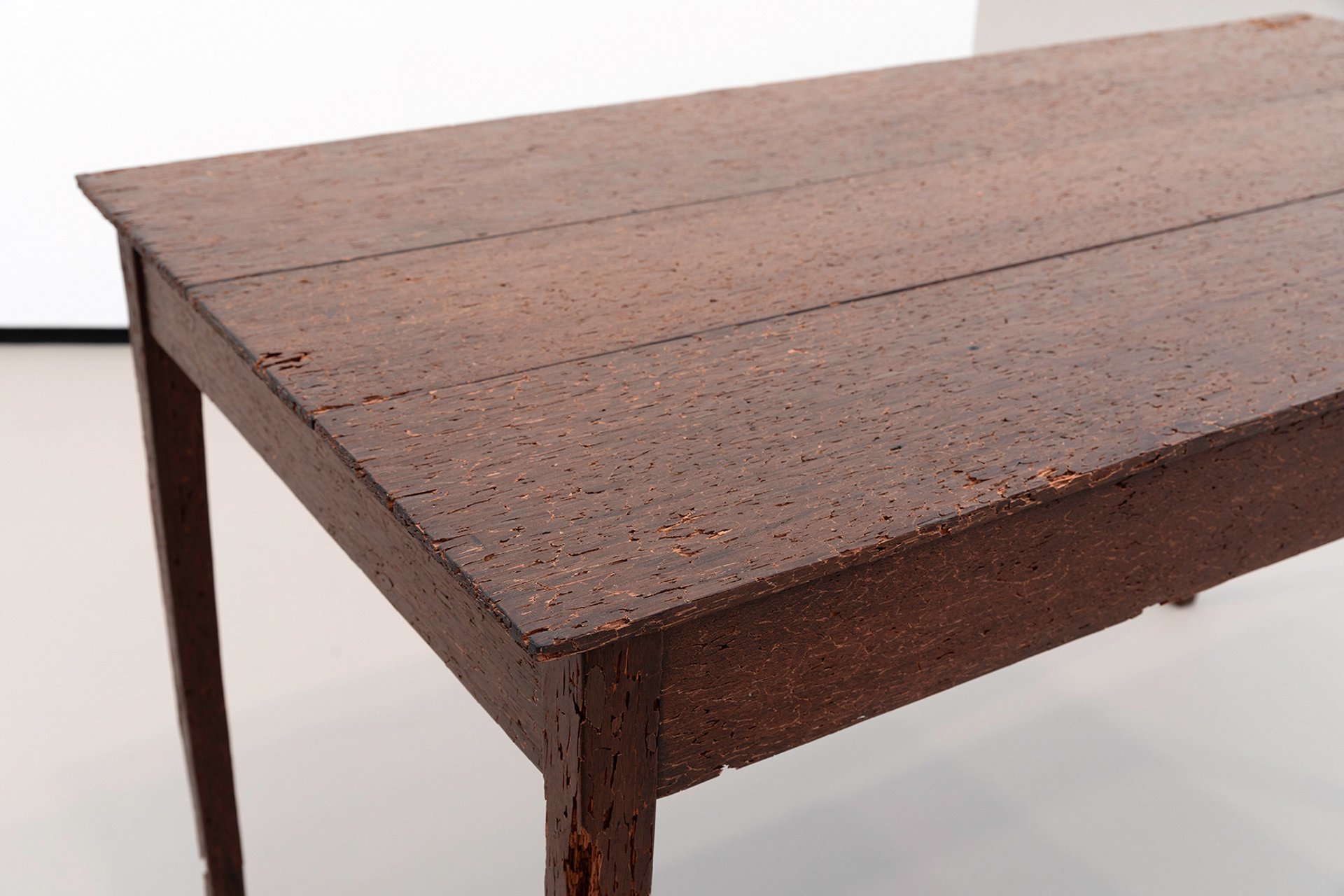
Doris Salcedo, Tabula Rasa III (2018) David Owens
Doris Salcedo
Tabula Rasa III (2018)
White Cube
Doris Salcedo and I have worked together on quite a spare, beautiful booth, which includes this work which has been destroyed and then reconstructed. It’s just like a sort of piece of shattered wood that has somehow been painstakingly put together. As so many of her works, it has an analogy not just her own experience of being a witness to essentially 50 years of civil war in Colombia, but it is also quite politicised, as she draws on [Jorge Luis] Borges and [Paul] Celan.
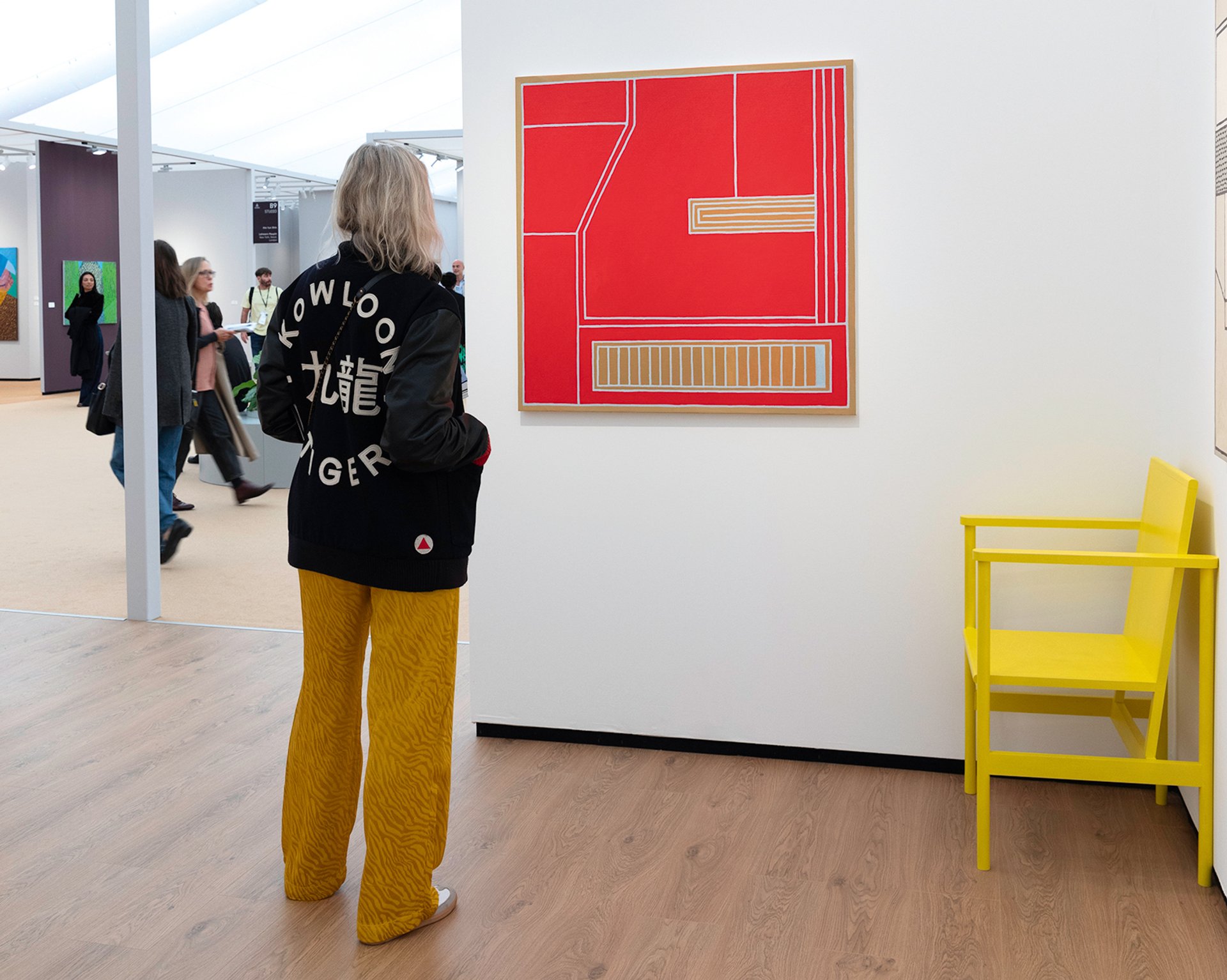
Nathalie Du Pasquier, Untitled (2024) David Owens
Nathalie Du Pasquier
Untitled (2024)
Pace Gallery
Nathalie Du Pasquier is an ex-member of the Memphis [design and architecture] Group, which was dissolved in 1987. She decided to start painting still lifes, inspired by [Giorgio] Morandi obviously, much less obviously Korean chaekgeori—19th-century painting and screens. She has done the cover of the Frieze Masters magazine, but also when you come into the fair, you will see this massive obelisk, and that is Nathalie’s whole design. It’s a whole wraparound. For the first time, Frieze Masters is indicated by a work by a living artist that is also beautiful.


